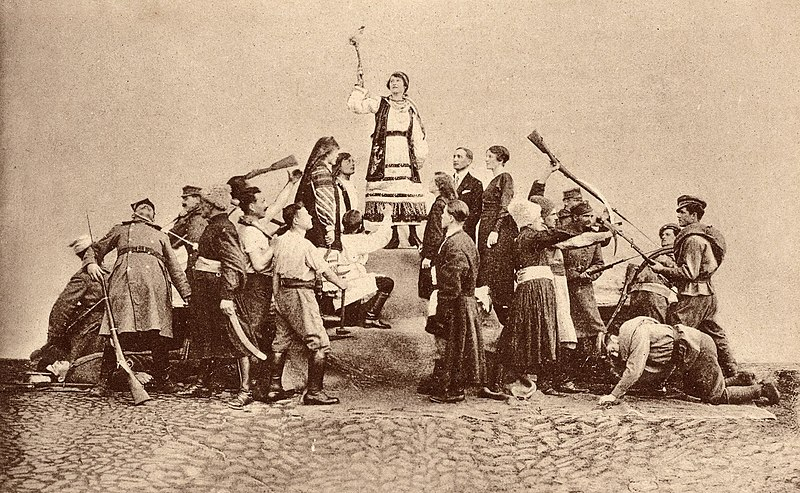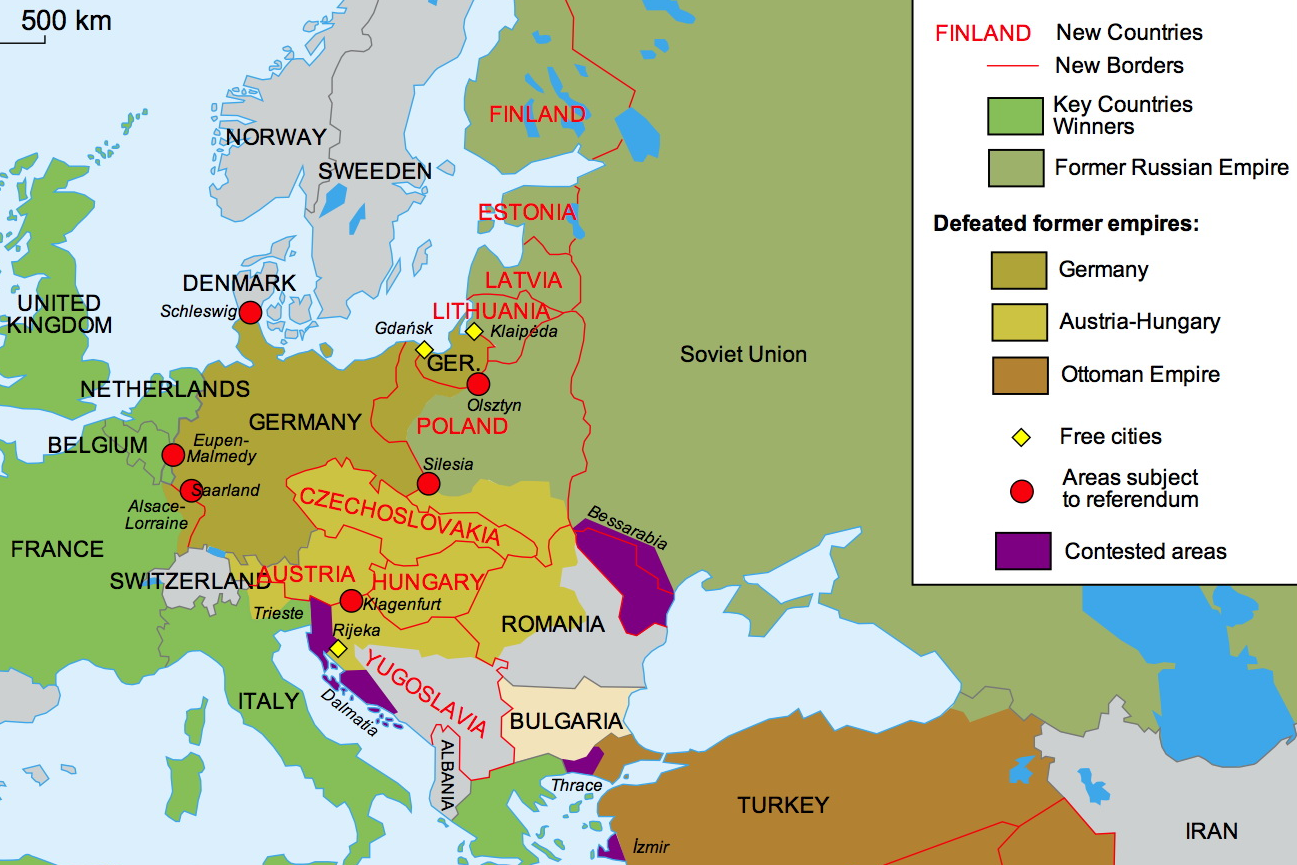Previous Subchapter → 1.2 History - Ukraine in Austria
Only 10 days after this West Ukrainian Republic was formed, what was left of the Central Powers surrendered to the Allies, releasing the Soviet Russians from their obligations to stay out of the former Russian Empire and allowing them to reform the Soviet Republic of Ukraine, a month later the Ukrainian People’s Republic was also restored, as the German aligned “Ukrainian State” collapsed after a withdrawal by the Central Powers from Ukraine.
But the exit of the Central Powers didn’t make Ukraine any more peaceful, in fact things got even more chaotic, with the UPR and Soviet Ukraine both being reformed and ready to oppose each other, two more groups also emerged, both opposing all the other factions: A militant Ukrainian Anarchist group called the Makhnovists, which became known as the Black Army, and lesser known groups known as the Green Army. The country also still wasn’t free from foreign occupation, as the Allies increased their troop numbers in Ukraine after the German withdrawal as part of their so-called “Southern Russia Intervention”.
As Ukraine welcomed the new year of 1919, West Ukraine signed a treaty to unite with the UPR as one large Ukrainian nation and the Black and Red Armies agreed to cooperate with each other as the Reds moved to reoccupy Ukraine, this made everything worse, as it threatened to drag the elements of Russia’s Civil War into the remains of Austria-Hungary and its squabbling nationalist groups, forcing Ukrainians to deal with the infighting between countless different factions.
One scholar described the crisis like this:
Even more armies were involved than this describes, as the Ukrainians and West Ukrainians were one country but they had separate armies, the Entente had multiple foreign armies involved and the Poles weren’t the only nationalists involved in the conflict, various other nationalists were still fighting West Ukraine over Carpathian Ruthenia.
But eventually the conflict began to slowly die out as the factions whittled each other down:
-
The Ukrainian Green Army didn’t survive 1919 and neither did the Red/Black Alliance or the Allied occupation, the West Ukrainians also lost Ruthenia, which was later given to Czechoslovakia by a peace treaty called the Treaty of Trianon, a deal between the Allies, most of the nationalists of former Austria-Hungary and Hungary itself.
-
In 1920 the UPR fighters signed a deal of their own called the Treaty of Warsaw, agreeing with the Polish nationalists to give up Galicia and form an alliance against the Red Russians.
-
In 1921 after periods of cooperation and conflict between the Black and Red Armies, they turned on each other for the last time, with the Black Army being wiped out.
-
By 1922, the Soviets were mopping up what remained of the White Russians and had consolidated their power in both Russia and Ukraine, they decided to make a deal with the Poles and the other ex Russian territories of Finland and the Baltic States of Latvia, Lithuania and Estonia, leaving them to remain independent outside of Communist control in exchange for peace with the Soviets, this allowed the Poles to consolidate power over Galicia and left Ukrainians split between Soviet, Romanian, Czechoslovakian and Polish rule.
[Editor’s Note: There were also a few other proto-states for Ukrainians, most with a Ukrainian identity, but some with Russian or other identities, most of these proto-states were very small territories, usually comprising small collections of villages, and they usually didn’t last that long, all of them were dissolved by the time the civil wars had ended.
The full list of these statelets, with notes, can be found on the sources list in the Episode 1 Sources page.]
By this point the rest of the former Russian Empire had fallen under the control of the Communists and they dissolved the Ukrainian People’s Republic. The Communist held territory was brought together as the Union of Soviet Socialist Republics in 1922 with Ukraine becoming a founding member known as the Ukrainian Soviet Socialist Republic, a territory that wasn’t just an autonomous part of Russia, but a Republic in its own right.

You were likely taught in school that World War One was from 1914-1918, but here we can see a different perspective. It was more like 1914-1922, when the border wars finally stopped and all the changes were finally sorted out, double the length we know it as.
So why is it only thought of as a 4 year war rather than an 8 year one? Well, for the second half a bunch of the major parties from the first were dead or not participating, that’s done some damage to the textbooks.
In 1923, after all this fighting was over, the final border changes looked like this:

The result of a conflict where both sides lost, the Allies in the Eastern Front, the Central Powers in the Western Front, 9 new countries were created in this time and Ukraine wasn’t one of them.
The Ukrainian independence movement had failed to follow the model of the other nationalist groups from the former Russian and Austro-Hungarian Empires and secure Ukraine’s place as an independent country, being brutally splintered between various powers instead, self determination had been achieved for some, but not all.
But the Ukrainians could claim some success, recognition as a people, they ensured that Ukraine was recognised as a place of its own rather than as just another province of a foreign power, these people weren’t Russians, Poles or Austrians, they were Ukrainians, the Ukrainian people were their own, born in the fires of war.